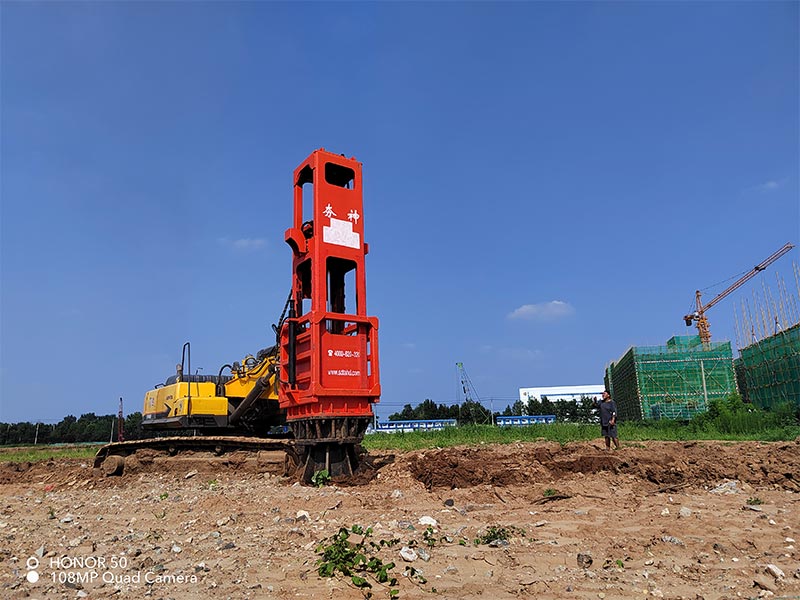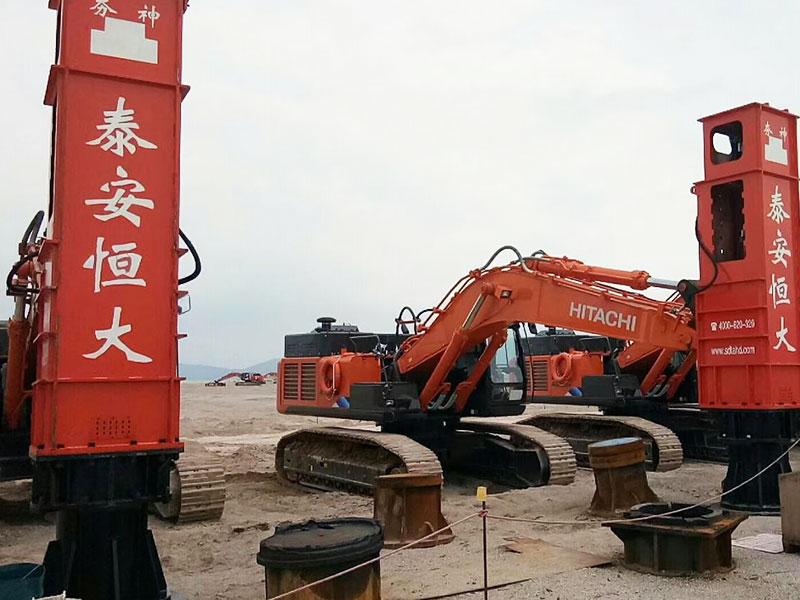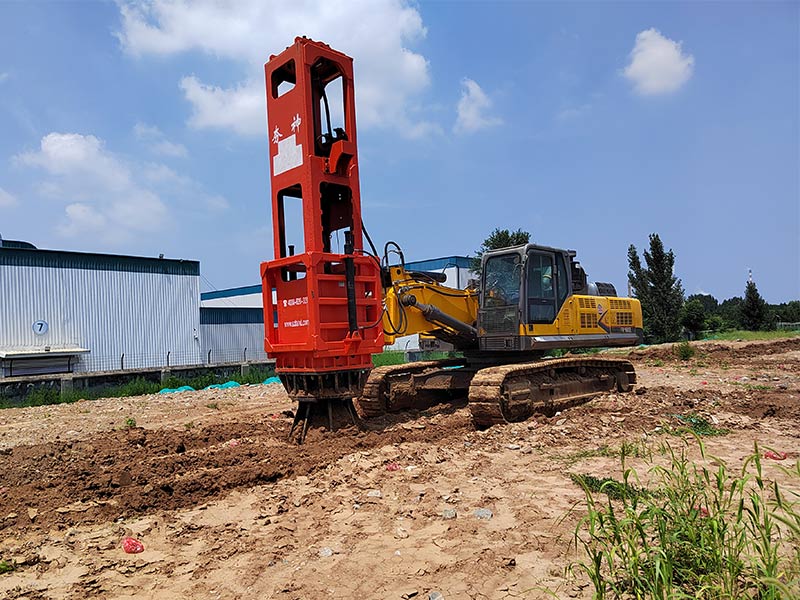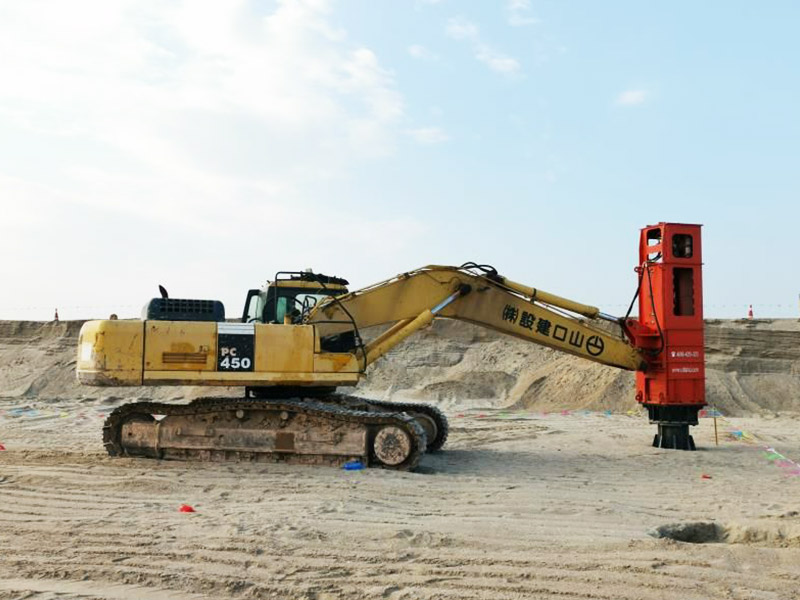
Birthplace of China's rapid impact compaction machine,Inventor: Cao Bin as chief engineer
ricmadeinchina@gmail.com
ricmadeinchina@gmail.com

Birthplace of China's rapid impact compaction machine,Inventor: Cao Bin as chief engineer
ricmadeinchina@gmail.com
Typically, the RIC method is used for the treatment of essentially granular fills in order to improve their geotechnical properties (stiffness and bearing capacity) and to reduce settlement. RIC design firstly involves geotechnical characterisation of the soils to be treated, with emphasis placed on quantifying in-situ relative density and grading characteristics. Groundwater level is an important factor for consideration of suitability of the RIC method as shallow groundwater level can act as a hydraulic barrier reducing effective energy transfer to the fill materials. However, it is the"compaction trial" (discussed under testing and quality control), which provides the designer with the necessary information to permit refinement of the design. With ground improvement techniques involving surface impact such as RIC there cannot be direct control of treatment depth, as would be the case with vibro stone columns. A critical element of RIC design therefore is the depth to which a particular treatment is effective.

With RIC the total energy input will have a major influence on the depth of compaction. With the rapid impact compactor the energy per blow is very much smaller than conventional DC and the fixed energy per blow of typically 8.4 t.m is not the major influence on the depth of compaction due to the progressive top down improvement of the treated ground. Of much greater significance to the effective depth of compaction is the number of blows at a compaction point or the energy applied overall to the ground surface. For typical impact spacing, 35 blows will impart about 170 tonne.m/m2 of energy. This level of energy input has produced significant compaction to depths between 3 and 4 m in non-engineered generally granular fill and up to about 3 m in natural sand and silty soils using a 7 t hammer.

Loess is a worldwide problematic soil and gives rise to a geohazard in the context of the built environment. This provides the engineering geologist with the challenge of achieving satisfactory site characterisation and prediction of engineering behaviour, and the geotechnical engineer with the challenge of providing practical and satisfactory ground improvement solutions and therefore foundation behaviour. The soil response to RIC is dependent on soil properties, principally degree of saturation; moisture content and plasticity. These aspects warrant further investigation and research in respect of any time dependent improvements in higher plasticity, more saturated loess soils. The particular advantages of the RIC technique compared to conventional “drop weight” dynamic compaction (DC) have been highlighted. The RIC technique therefore potentially provides a ground improvement option, which dependent upon site specific circumstances (particularly geotechnical properties and site characterisation), could potentially be given consideration for reducing risk in these problematic soils in loess regions in the context of low-rise structures.

The RIC, imparts energy by dropping a 5 to 9 tonne weight from a relatively small height of 1.2 m at a blow rate of 30 to 80 times a minute. Depending on the ram weight, the maximum energy delivered per blow is 59 to 106 kNm. Although the energy per blow is small compared to the conventional DC, the rapid blow frequency amply compensates, resulting in a greater power that varies between 2.4 to 6.4 MNm/min. Thus, a much greater total energy input per unit area of a site can be achieved with RIC. Moreover, the energy transfer of the RIC is far more effective due to its foot which stays in contact with the ground during the impact sequence.

The RIC employs an on-board computer to control impact set termination criteria, and to record critical data. So the machine is accurately controlled from the excavator cab, and the degree of compaction is electronically monitored. The monitor can be set to halt impacting on a footprint once the design set is reached. Thus, wasting energy is avoided, and performance and production rates can be improved. The data stored in the monitor can be downloaded to a PC and analysed, evaluated and printed.

Numerous developments of the last decades provide a broad range of near-surface compaction technologies (such as static and dynamic rollers) and deep compaction techniques (such as deep vibro-compaction, vibro-flotation and deep vibroreplacement, heavy tamping). However, until recently no device was available for middle-deep compaction. The lately introduced Rapid Impact Compactor (RIC) aims at closing the gap between the surface compaction methods and the deep compaction methods, and permitting a middle-deep improvement of the ground up to a depth of 4 to 10 m.

Address: Tai'an, Shandong, China

Taian Hengda Machinery Co., Ltd
National government certification:鲁ICP备18050468号-9
